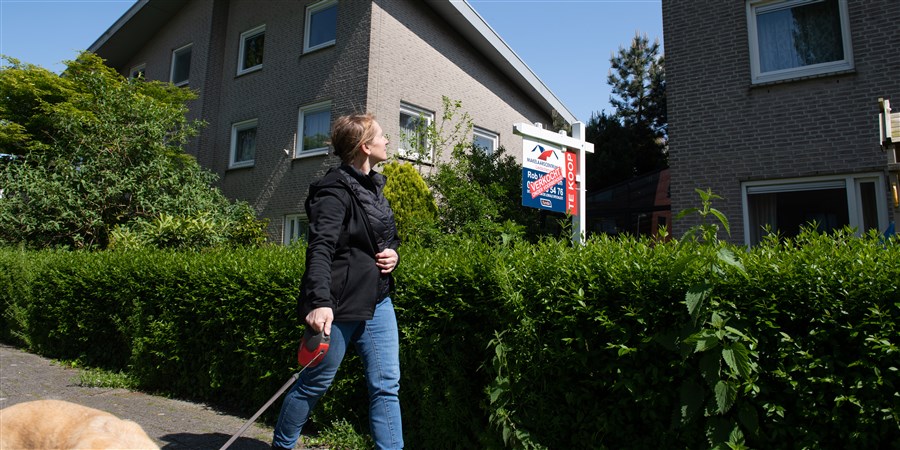Share of income spent on housing fell between 2018 and 2023

| Jaar | Home owners (% of households) | Social housing tenants (% of households) | Tenants not renting from housing associations (% of households) |
|---|---|---|---|
| 2018 | 20.4 | 31.0 | 33.5 |
| 2019 | 19.9 | 30.7 | 33.4 |
| 2020 | 18.7 | 29.0 | 32.2 |
| 2021 | 18.3 | 29.7 | 32.5 |
| 2022 | 17.1 | 24.6 | 30.1 |
| 2023* | 17.1 | 25.4 | 30.2 |
| * provisional figures | |||
Housing costs rose the most sharply for tenants not renting from housing associations
Total housing costs (i.e. a household’s total monthly housing expenses) were higher in 2023 than in 2018. For tenants not renting from housing associations, median housing costs rose the most, by 23 percent; while for home owners they rose by 6 percent and for social housing tenants by 11 percent. Tenants of housing association properties benefited particularly from both the government's energy allowance to reduce household energy costs in the autumn of 2022 and from the freeze on basic rents for social housing in the summer of 2021. These were both contributing factors.| Jaar | Home owners (euros) | Social housing tenants (euros) | Tenants not renting from housing associations (euros) |
|---|---|---|---|
| 2018 | 758 | 558 | 853 |
| 2019 | 771 | 571 | 890 |
| 2020 | 752 | 559 | 901 |
| 2021 | 763 | 592 | 949 |
| 2022 | 750 | 562 | 954 |
| 2023* | 806 | 617 | 1045 |
| * provisional figures | |||
Incomes have risen more rapidly than housing costs
The lower housing cost ratio is the result of the fact that the average household income rose more rapidly between 2018 and 2023 than housing costs. In 2023, the median income rose the most sharply among tenants not renting from housing associations, up by 33 percent on 2018. For home owners and housing association tenants, average incomes rose by 27 and 25 percent, respectively.| Jaar | Home owners (x 1,000 euros) | Social housing tenants (x 1,000 euros) | Tenants not renting from housing associations (x 1,000 euros) |
|---|---|---|---|
| 2018 | 47.0 | 21.6 | 28.6 |
| 2019 | 49.2 | 22.4 | 30.3 |
| 2020 | 50.9 | 23.0 | 31.7 |
| 2021 | 52.9 | 23.7 | 33.3 |
| 2022 | 55.2 | 24.6 | 34.8 |
| 2023* | 59.8 | 26.9 | 38.0 |
| * provisional figures | |||
Number of tenants not renting from housing associations increased the most sharply
In relative terms, the group with the highest housing costs - tenants not renting from housing associations - has grown the most sharply since 2018, from around 670 thousand households in 2018 to around 825 thousand households in 2023. That was an increase of approximately 23 percent. The number of home owners and housing association tenants increased marginally between 2018 and 2023, by 4 and 1 percent respectively. Tenants not renting from housing associations remain the smallest group, at 11 percent, followed by social housing tenants (28 percent) and home owners (60 percent).
These figures are taken from the Woonbase, the new housing survey based on integrated data sources. The Woonbase was developed by Statistics Netherlands (CBS) in cooperation with the Ministry of Housing and Spatial Planning (VRO). With effect from 2022, CBS’s Woonbase has provided the regular annual figures on housing cost ratio in the Netherlands. The figures in this news release refer to private households in regular housing, excluding student households and other households sharing the same address.
Sources
- StatLine - Housing costs for households